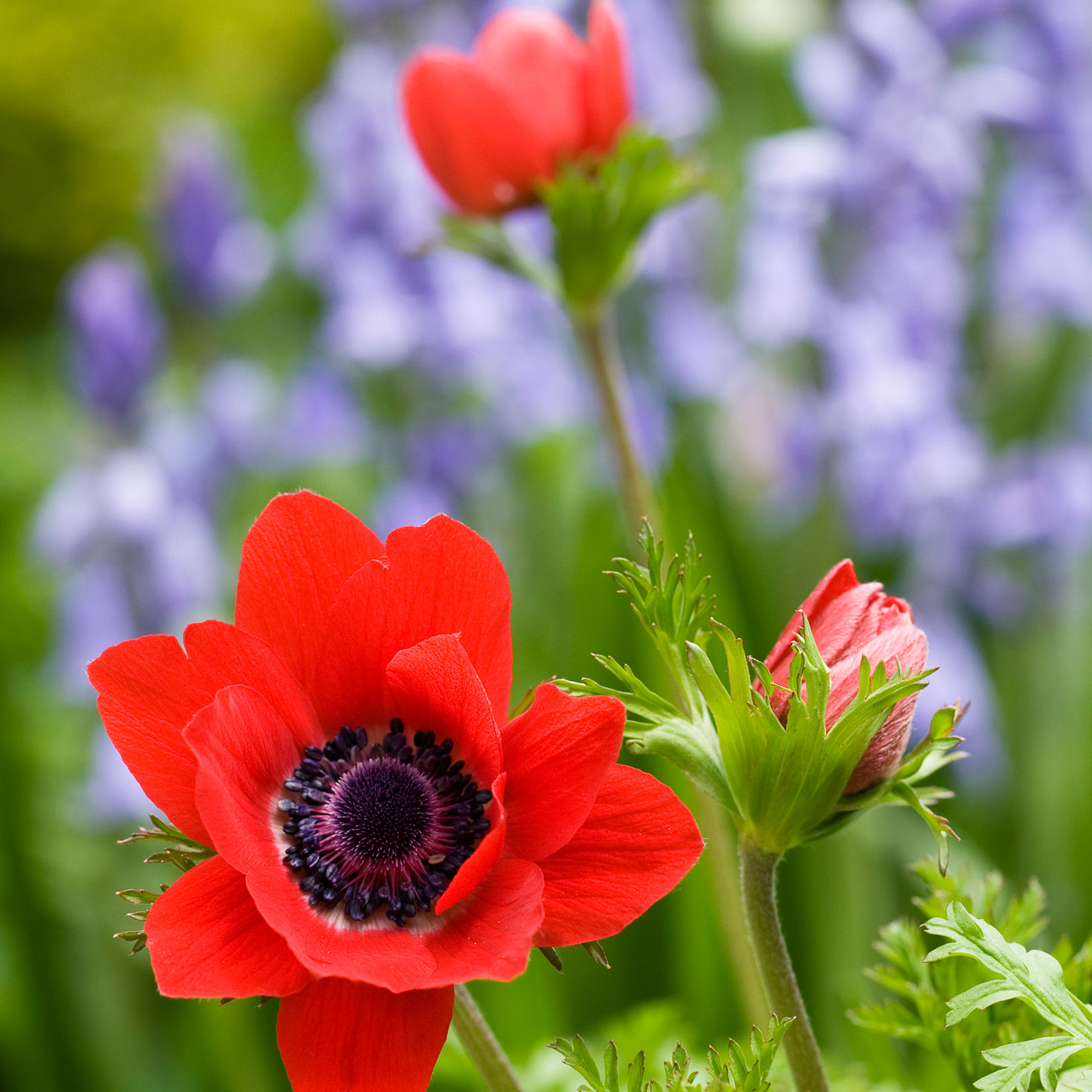
Knowing how to plant anemone bulbs is essential if you want to add these beautifully vibrant flowers to your garden.
Once you've correctly planned how and when to plant anemone bulbs, you'll be able to look forward to their colour and character they bring to a garden. Available in a painterly palette ranging from deep indigos and eye-catching reds to soft purples, pinks and whites – they are a beautiful addition to any plot. Plus they're really easy to grow – so long as they are well planted.
Anemone bulbs – or corms – look very different from those that we typically expect – like tulip bulbs or daffodil bulbs. Instead, they are small, wrinkled, hard nut-like bulbs – measuring just 5cm wide.
Winter windflowers (Anemone blanda) and the classic Poppy anemone (Anemone coronaria) are both grown from corms. Wood anemone (Anemone nemorosa) and Japanese anemones (Eriocapitella hupehensis) grows from a rhizome.

What you'll need
- Anemone corms – see below
- Well-draining compost or organic matter
- Leaf mulch
- Grit – like this Westland Horticultural Grit from Amazon
- Hand trowel – like this Spear & Jackson trowel from Amazon
- Bowl of water
Where to buy anemone bulbs
Crocus: a wide selection of anemone bulbs
Sarah Raven: a wide selection of wood and garden anemone bulbs
Thompson-Morgan: a spring-flowering anemone and tulip bulb mix
How to plant anemone bulbs – step-by-step
1. Wait for the right time of year
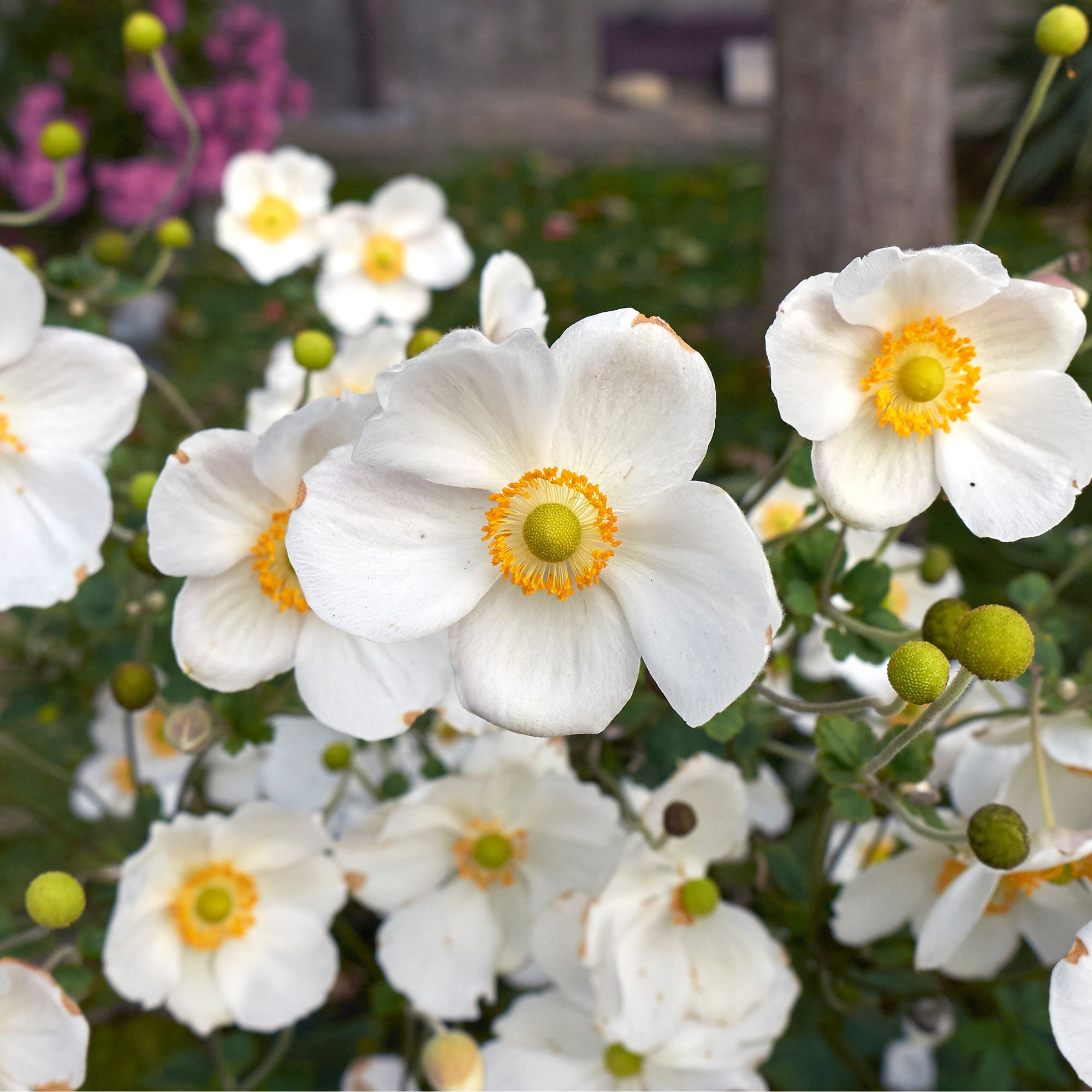
'Anemones come in several different species which flower over the year from spring to autumn,' says Angela Slater, gardening expert at Hayes Garden World. 'The spring flowering varieties are available as dry corms in autumn and must be planted immediately for a show in spring garden borders.'
Windflower and wood anemones are best planted during autumn before the first frosts while Poppy Anemones can be planted at any time of year – though for reasons of practicality, it is best avoided when the soil is frozen or very dry.
2. Choose the right spot and soil

Getting the right placement is essential when learning how to plant anemone bulbs. 'Each type of anemones is different so always check which type will work in the spaces you have,' says Josh Novell, gardening expert at Polhill Garden Centre.
'Wood anemones prefer light shade and are a welcome addition to garden shade ideas and are ideal to plant under trees or shrub. You’ll want to keep the soil moist. Poppy Anemones love sunlight and are well suited to a south-facing garden.'
'Make sure you put them in borders or in containers in your sunniest section of the garden,' Josh continues. 'Ensure the soil is well drained too. Japanese Anemones are a mix of the two above, so partial shade, ideally if you have a pond to keep the atmosphere moist.'
'They are all hardy apart from Anemone coronaria which is best grown in containers and brought into a frost free spot over winter,' adds gardening expert Angela.
3. Soak the bulbs
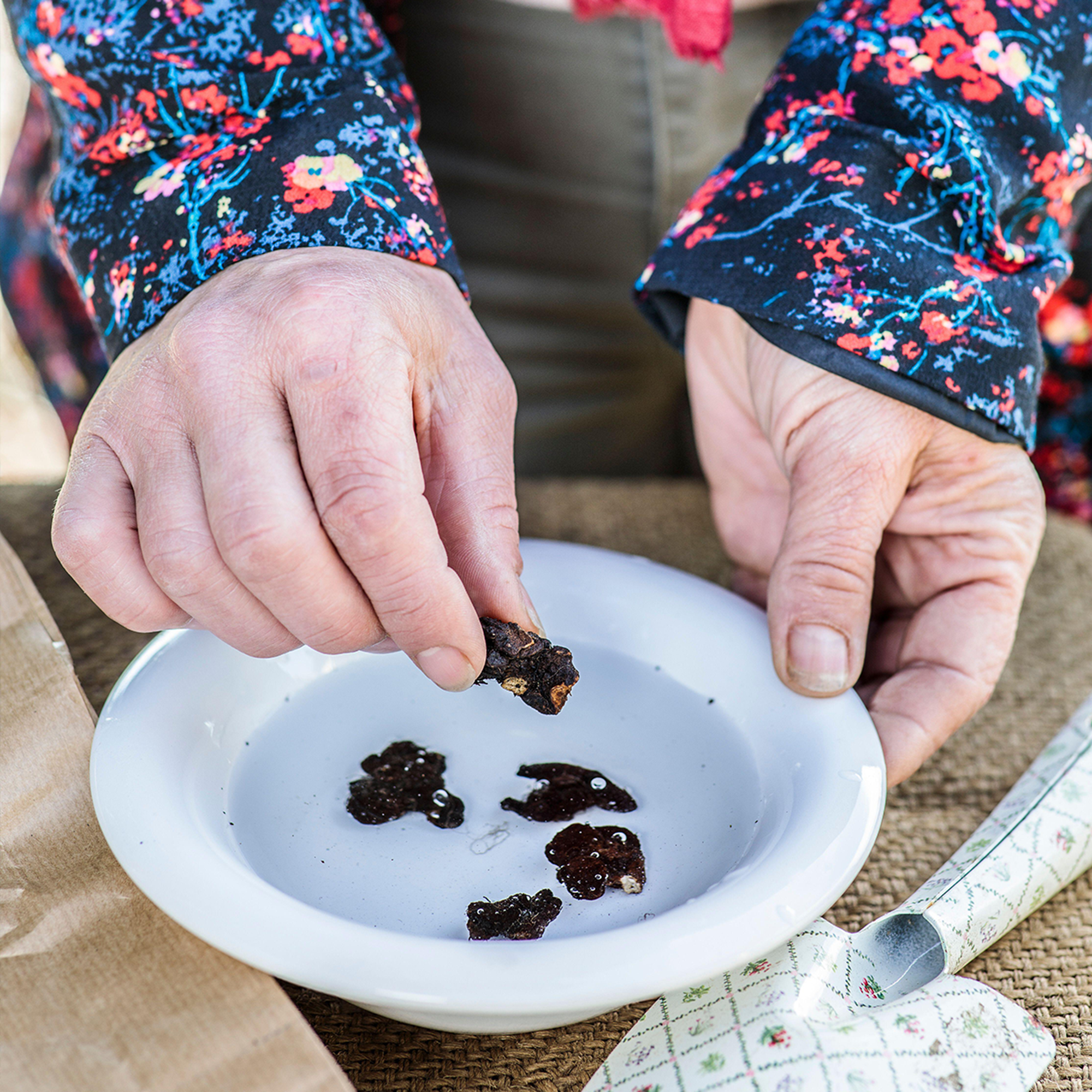
'When you purchase your anemone bulbs from the garden centre, they may seem small. Soak them overnight in water to plump them up before planting,' advises Julian Palphramand, head of plants at British Garden Centres. Soaking the anemone bulbs encourages germination.
4. Prepare the soil

'Ensure the soil is well-drained and rich in organic matter,' says gardening expert Josh.
'Prepare the soil by adding compost and grit as anemones require good drainage,' adds Julian from British Garden Centres. 'This will improve aeration and moisture retention. We also recommend you add a mulch or leaf mould to maintain soil moisture.'
If your soil is very heavy clay, it is worth improving clay soil for gardening by adding organic matter, this will help to elevate the quality of the soil and provide a good environment for your bulbs to grow. Alternatively, plant your anemone bulbs in a pot of well-draining peat-free compost.
5. Plant at 8cm deep

'Plant approximately 8cm deep and 10cm apart but avoid overcrowding,' says Julian. 'If planting in a pot to add to your container garden, then plant no more than 10 bulbs per pot.'
6. Aftercare
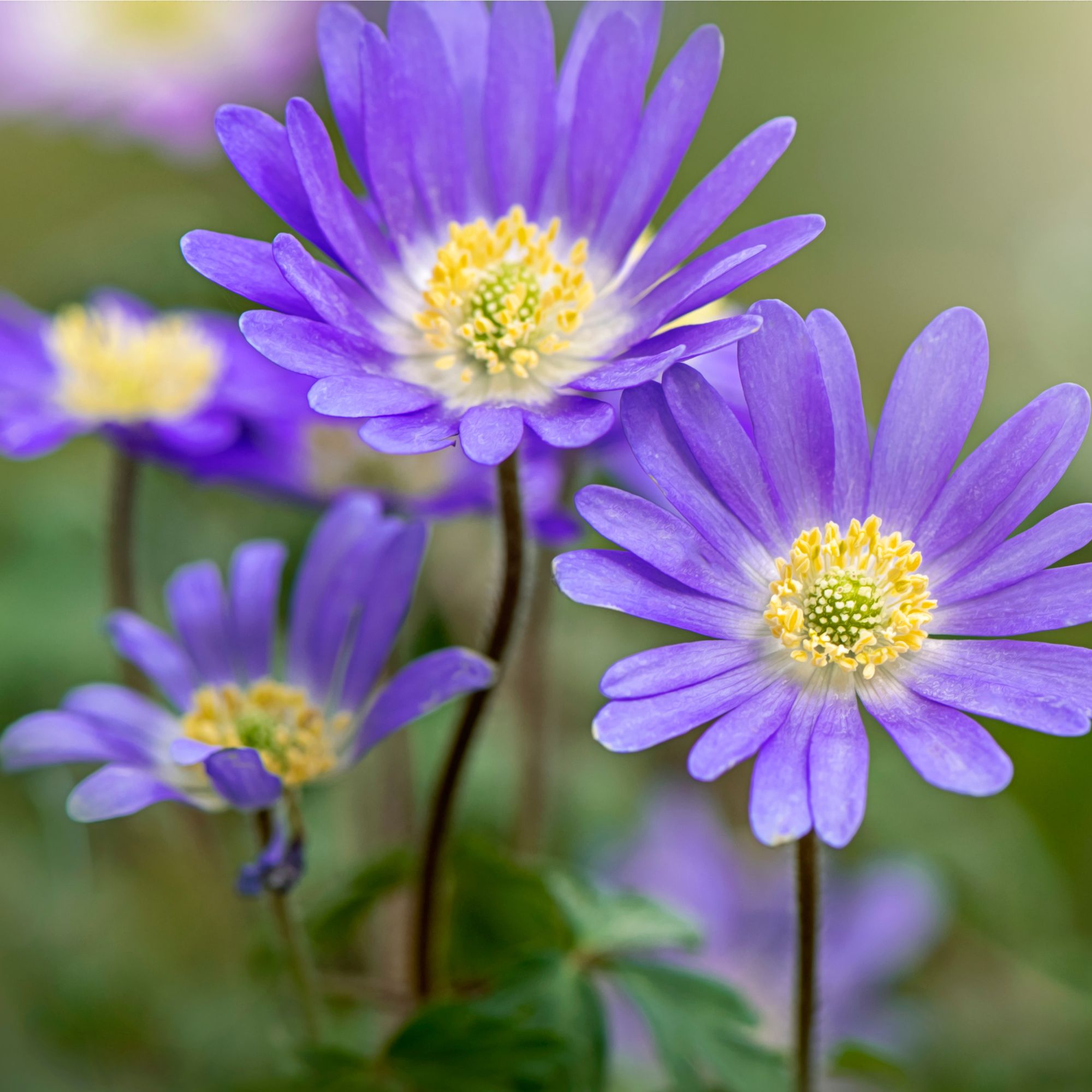
The most important part of learning how to plant anemone bulbs is the aftercare.
'In colder climates, cover the planting area with a layer of mulch to protect the corms from frost,' says Josh. Also, use some natural ways to get rid of slugs to keep the pests at bay.
'Anemones can be susceptible to caterpillars – learning how to stop caterpillars is essential – and powdery mildew,' cautions plant expert Julian. 'Handpick caterpillars if spotted or cover plants with fleece.'
'To prevent powdery mildew, improve air circulation and remove infected foliage immediately to avoid spreading.'
7. Enjoy the blooms
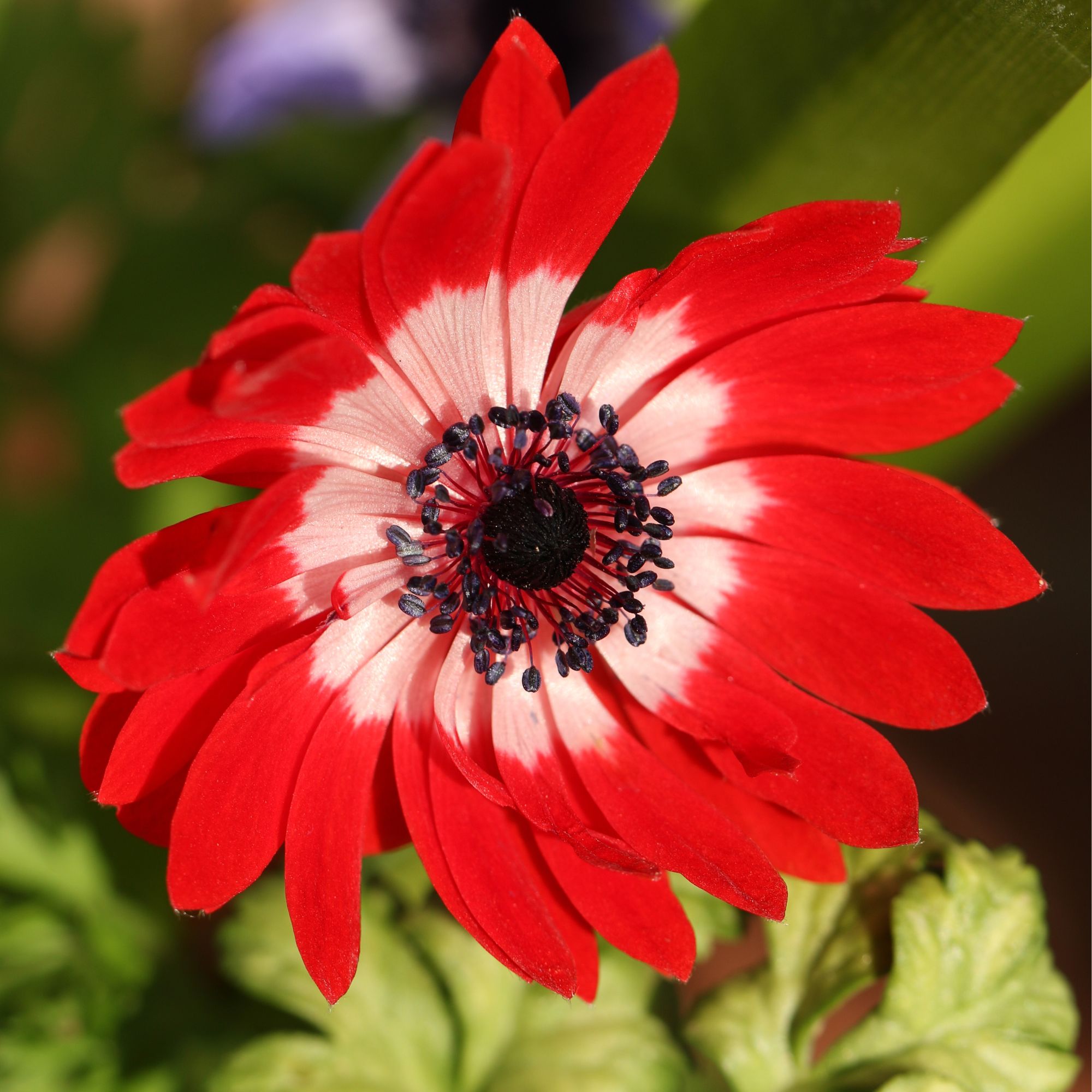
Once you've learn how to plant anemone bulbs, you'll be rewarded with beautiful blooms. Anemones usually flower in spring, though some also bloom in autumn.
FAQs
Should I soak anemone bulbs before planting?
Yes, you should soak anemone bulbs before planting. This will give them a headstart when you plant them out. 'The dry corms must be soaked in warm water for about 12 hours before planting to ensure the greatest success,' advises gardening expert Angela Slater.
'If you miss buying the dry corms, they are usually available as growing plants in garden centres at the appropriate time.'
What are the different types of anemones?
Different types of anemones have different characteristics and require different care. Angela from Hayes Garden World, talks us through the different varieties:
Anemone blanda is approximately 6 inches tall and ideal for a woodland garden as it flowers in spring.
Anemone coronaria ‘De Caen’ grows to a foot tall and is excellent for cutting. It flowers in late spring to early summer. Needs frost protection over winter. It can be planted from May to August for a long season of flowers.
Anemone hupehensis and Anemone x hybrida (Japanese anemones, Windflowers) are fantastic plants for the late summer/early autumn border as they are such reliable flowerers and will soon bulk up to be a large clump. They range in height from 1 – 3ft and come in a range of pastel colours, with many pink shades. Double flowers are also available. Once planted, they need no more maintenance apart from clearing away the dead foliage.
Anemone nemorosa grows to 6 inches tall, comes in pastel shades, flowers in spring and is ideal for a woodland garden.







